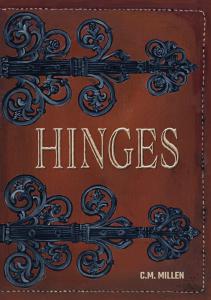
Hinges
C.M. Millen
$19.9519.95More Details
Northern Ohio, specifically northwest Ohio, was one of the most used paths to Canada after the passage of the Fugitive Slave Act in 1850. Prior to this, slaves were relatively safe and unmolested if they managed to make it to a Northern State. With the passage of the Fugitive Slave Act, and its monetary incentives to slave catchers/bounty hunters, no slave was safe, even if he or she had been in the Northern states for many years. Free blacks were often picked up, either mistakenly or on purpose, and returned to the South. If they did not have someone to testify on their behalf, they had no recourse and were taken away.
In light of the Act, the dynamics of the Underground Railroad changed and were much more dangerous. Thousands of slaves escaped through NW Ohio from 1850 to the Civil War because it was the closest link to Canada, and it was primarily due to the operations of free black men. This is all documented in newspaper articles and historical meetings. Not one slave was caught.
In Hinges, the story is written from the viewpoint of 11-year-old Ellen Winslow, a white girl who actually lived from 1839 to 1859 in Maumee, Ohio. Her father, Amasa Winslow, was a well-known blacksmith and abolitionist who hid slaves in his barn. He worked with David Harroun -- a man who hid slaves on his property 15 miles north of Winslow -- and others, including Lucian Lathrop. The entire operation was coordinated by three black barbers: William Merritt of Maumee, an unnamed black barber across the river in Perrysburg, and a third barber in Findlay. They were also helped by men of the Ottawa tribe who sailed down from Canada and Michigan in their canoes, and others in the area.
Hinges also includes vocabulary words, discussion questions, and additional information, broken down by chapter, at the back of the book.

